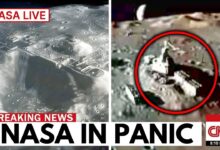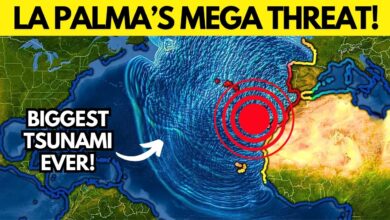Atlantis Rises, Lemuria Falls: The War that Sank a Continent

This episode of The Y-Files is sponsored by PDS Debt. The world has been fascinated by the mystery of Atlantis for thousands of years. However, there was not only Atlantis, but also another continent called Lemuria, which is believed to have sunk to the bottom of the Indian Ocean after an ancient disaster. Lemuria and Atlantis have similarities in that they have inspired many theories and legends, but they differ in that Lemuria has remaining evidence while Atlantis does not.
This is followed by a humorous conversation about building a “terrarium” with sand and other materials, but having financial problems. This conversation is not directly related to the mystery of Lemuria, but is mainly for entertainment.
Returning to Lemuria, in 1858, zoologist Philip Slater proposed a geographical classification system, but was challenged by the discovery of lemur fossils in places as far away as South America, India, Africa and Madagascar. This led him to theorize that a large continent once connected these regions, which he called Lemuria. His hypothesis was accepted by the scientific community, and later became the basis for many other theories about Lemuria as the homeland of humanity.
In 1888, Helena Blavatsky, a mystic, published the theory that Lemuria was the homeland of a race of giants and strange beings. She described Lemuria as a stage in human evolution. These theories were later expanded upon by other thinkers, including James Churchward, who linked Lemuria to the sunken continent of Mu.
Modern scientists believe that the disappearance of Lemuria may have been linked to a global catastrophe some 11,500 years ago. This catastrophe included melting ice caps and massive floods, which may have caused the continents to sink underwater. Some even believe that Lemuria’s demise was caused by a major natural event such as an ancient nuclear war caused by the Anunnaki aliens.
The theory of Lemuria continues to attract the attention of researchers, with evidence of a sunken continent still being debated.
In ancient times, a great war broke out between Atlantis and Lemuria, two highly advanced civilizations. Atlantis, which refused Lemuria’s request for peace, initiated a devastating conflict around 10,468 BC. According to the philosopher Plato, Atlantis was destroyed around 9500 BC, while other ancient records suggest similar timelines. Atlantis was technologically superior, with advanced weapons and flying crafts powered by fire crystals. Their energy weapons could destroy mountains, while Lemuria, not as militarily advanced, struggled to defend itself.
The war was catastrophic for both sides. The Atlanteans harnessed solar energy to burn vast areas of the Earth, while Lemurians sought to retaliate by altering rivers and changing the landscape. The result was devastating—over 60 million Lemurians perished, and the survivors took refuge underground in Agartha. Eventually, they launched a final attack on Atlantis. The conflict caused massive instability in the Earth’s environment, including nuclear explosions that shifted the planet’s poles. This marked the end of Atlantis as a civilization. However, some remnants of their existence are believed to remain in places like Stonehenge and the Great Pyramids.
Despite the destruction, about 10,000 Lemurians survived and secretly rebuilt their society beneath Mount Shasta in California. This hidden city, known as Telos, has become a focal point for many strange and mystical sightings. Locals report seeing glowing orbs, hearing unexplained voices, and sensing an otherworldly presence near the mountain. Native American tribes consider Mount Shasta a sacred site, believing it holds spiritual power and a thin boundary between dimensions.
Geological studies of Mount Shasta also reveal its uniqueness, as the mountain contains various types of rocks and plants found nowhere else in the region. According to legend, these unique features were brought by the Lemurians who migrated to North America after the war. They established Telos, a vast underground city made up of five levels of corridors, chambers, and gardens. Eyewitnesses describe approaching the hidden entrance to Telos as an intense experience, with vibrations and humming sounds permeating the ground. Inside the city, the atmosphere is said to glow with a soft light emanating from the crystalline walls.
The Lemurians, who reside in Telos, are described as tall beings—seven feet or more in height—draped in flowing white robes. Their technology, integrated seamlessly with nature, is said to include large crystalline structures that power the city and serve functions like healing and communication. Crystal technology allows them to communicate telepathically across vast distances, and transportation within the city is achieved using levitating platforms that glide along magnetic lines, controlled by thought alone. At the heart of Telos lies the Temple of the Heart, where a massive crystal pulses in sync with the Earth’s natural rhythm.
Throughout history, Mount Shasta has been a place of fascination for explorers. In 1904, a British prospector named JC Brown claimed to have discovered a hidden cavern within the mountain. He reportedly walked miles through tunnels filled with ancient treasures, including gold, copper tablets, statues, and even skeletal remains of beings as tall as 10 feet. Brown took detailed notes of his findings but mysteriously vanished before leading an expedition to uncover more.
The story of lost continents is not unique to the West. In South India, the Tamil people have a similar legend of a sunken land called Kumari Kandam. This ancient continent was said to have been ruled by the Pandian Kings and submerged around 10,000 years ago due to rising seas. The description of Kumari Kandam, located in the Indian Ocean between India and Madagascar, echoes the stories of Lemuria.
Scientific discoveries have added credence to some of these ancient legends. In 2013, geologists found traces of a submerged continent, Mauritia, beneath the Indian Ocean. This landmass, buried millions of years ago, was once connected to Madagascar and India. While Mauritia was not home to advanced human civilizations like Lemuria, its discovery suggests that lost continents did exist in the distant past, giving more weight to the legends of Lemuria and Atlantis.
Further underwater discoveries around the world have uncovered ancient cities that had been thought to be mythical. In the 1980s, the city of Dwarka, mentioned in Hindu texts as a prosperous and advanced city, was found off the coast of India. Estimated to be 10,000 years old, it had been submerged by rising seas, just as described in the legends. Similarly, a mysterious underwater structure was discovered off the coast of Cuba at a depth of 2,000 feet. Initially thought to be natural formations, further exploration revealed it to be a sunken city, with some blocks dating back over 6,000 years.
These discoveries show that while many legends of lost civilizations like Atlantis and Lemuria remain speculative, there are enough clues beneath the ocean to suggest that some ancient myths may be based in truth. As exploration continues, new evidence could eventually confirm the existence of these legendary civilizations.








